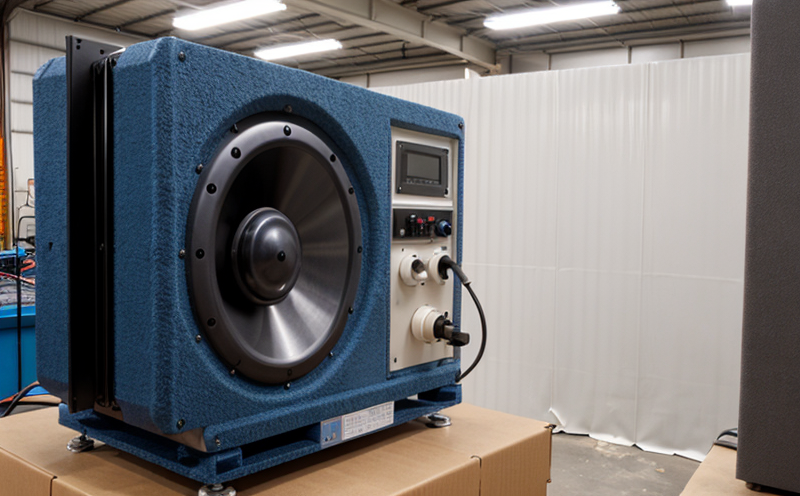IEC 60704-2-20 Portable Fan Noise Testing
The IEC 60704-2-20 standard provides a framework for evaluating the noise produced by portable fans. This is crucial for ensuring that products meet safety and performance criteria, thereby protecting user health and enhancing product reliability.
Portable fans are widely used in various settings including home environments, offices, and public spaces. The noise emitted can significantly affect user comfort and satisfaction. Excessive noise may lead to complaints from users, which could negatively impact brand reputation and sales. By adhering to IEC 60704-2-20, manufacturers ensure that their products meet stringent international standards, thereby maintaining a competitive edge in the market.
The testing procedure outlined in this standard is designed to accurately measure sound pressure levels at specific distances from the fan. This involves setting up the test environment according to ISO 3745:2019 and using calibrated measurement instruments such as type 1 or better sound level meters (SPLM). The measurement points are typically located between 20 cm and 1 m away from the fan's air outlet, depending on the size of the fan.
The noise level is measured in decibels (dB) using A-weighted sound levels. The standard specifies a maximum permissible noise level based on the fan's power rating, as defined by ISO 11203. For instance, fans with higher power ratings are expected to produce more sound pressure than those with lower power ratings. The testing process is repeated under different operating conditions such as maximum speed and minimum speed to ensure consistent performance.
The results of the noise tests provide critical insights into the fan's design and manufacturing quality. They help identify areas for improvement, ensuring that the product meets customer expectations and regulatory requirements. Compliance with IEC 60704-2-20 not only enhances user satisfaction but also helps in avoiding potential legal issues related to product safety.
Understanding the importance of noise testing is essential for quality managers, compliance officers, R&D engineers, and procurement personnel involved in the development and production of portable fans. By following this standard, these professionals can ensure that their products are not only functional but also environmentally friendly and sustainable.
Environmental and Sustainability Contributions
The IEC 60704-2-20 noise testing contributes to environmental sustainability by promoting the reduction of noise pollution. Excessive noise from portable fans can lead to increased stress levels in users, which has been linked to various health issues. By adhering to this standard, manufacturers can significantly reduce these negative impacts on public health.
Compliance with IEC 60704-2-20 also supports the development of quieter and more efficient fans. This contributes to energy savings as fans operating at lower noise levels often consume less power. Lowering the noise level also reduces the need for additional insulation in buildings, which is beneficial for both consumers and the environment.
In addition to these direct benefits, adhering to international standards like IEC 60704-2-20 fosters a culture of continuous improvement within manufacturing processes. This encourages companies to adopt more sustainable practices across all aspects of their operations, including sourcing materials, reducing waste, and promoting recycling.
By participating in such testing, manufacturers demonstrate their commitment to environmental responsibility, which can be a key differentiator in the competitive market. It builds trust with consumers who are increasingly prioritizing sustainability when making purchasing decisions.
Competitive Advantage and Market Impact
Compliance with IEC 60704-2-20 Portable Fan Noise Testing provides significant competitive advantages in the market. By ensuring that their products meet strict international standards, manufacturers can differentiate themselves from competitors who may not adhere to such rigorous testing protocols.
Clients and consumers are increasingly demanding products that are not only functional but also environmentally friendly. Adhering to this standard demonstrates a company's commitment to quality and sustainability, which is becoming an important factor in consumer decision-making. This can lead to increased customer loyalty and repeat business as satisfied customers recommend the product to others.
From a regulatory perspective, compliance with IEC 60704-2-20 ensures that products meet legal requirements. This reduces the risk of non-compliance penalties and potential recalls, which can be costly and damaging to a company's reputation. Meeting these standards also facilitates smoother international trade by ensuring compatibility with regulations in different countries.
For R&D engineers involved in product development, adherence to IEC 60704-2-20 provides a clear framework for innovation. It encourages the exploration of quieter and more efficient fan designs that can outperform competitors in both noise reduction and performance. This can lead to the introduction of new products that set industry benchmarks.
Finally, by participating in such testing, companies can position themselves as leaders in their field. This can attract investment, partnerships, and collaborations with other organizations committed to sustainability and innovation. Such recognition enhances a company's market standing and opens up opportunities for growth and expansion.
Use Cases and Application Examples
- Home Appliances: Ensuring that fans used in home appliances like air coolers, humidifiers, and other similar devices meet noise requirements to enhance user comfort without compromising on functionality.
- Office Equipment: Testing the noise levels of portable fans used in office settings such as printers, servers, and other electronic devices to ensure they do not disrupt productivity or cause discomfort among employees.
- Public Spaces: Evaluating noise emissions from fans installed in public spaces like airports, hospitals, and shopping malls to maintain a comfortable environment for visitors and staff.
- Portable Electronics: Assessing the noise levels of portable electronic devices such as laptops and tablets that include cooling fans to ensure they do not interfere with user experience.
- Outdoor Equipment: Testing noise emissions from outdoor portable fans used in recreational settings like camping, hiking, and picnicking to ensure they are safe for use in various environments.
The IEC 60704-2-20 standard is particularly relevant for manufacturers of portable fans who aim to meet international standards and demonstrate compliance with regulatory requirements. By adhering to this standard, companies can ensure that their products are not only safe but also environmentally friendly and sustainable.





